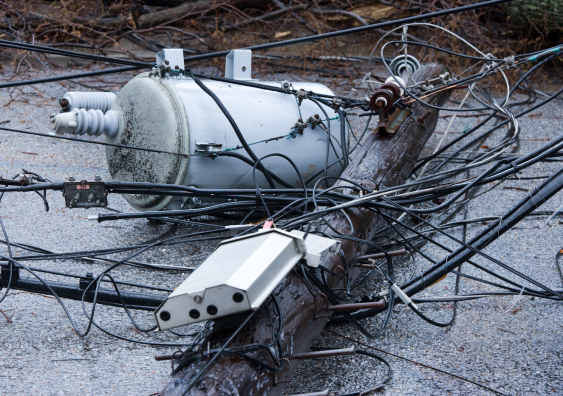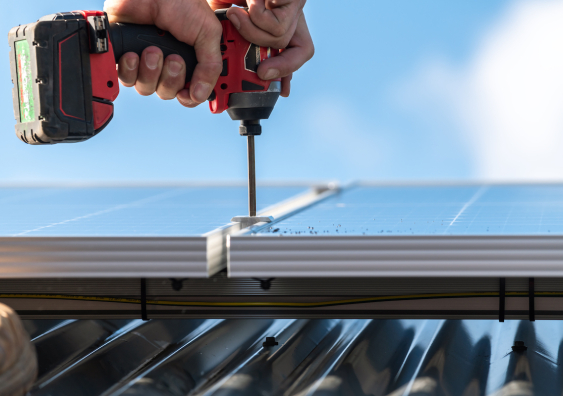Remote communities in disaster-prone areas could become more resilient to power outages by adopting more renewable energy technologies according to a recent UNSW Sydney report.
The document recommends more policy support for the uptake of Distributed Energy Resources (DER) like solar PV and batteries to help households manage disruptions to the electricity grid caused by bushfires and other extreme weather events.
The report by researchers from the Collaboration on Energy and Environmental Markets (CEEM) draws on interviews, workshops, and case studies to provide insights into how power outages impact households and communities. It was funded by the New South Wales Reconstruction Authority’s Bushfire Community Resilience and Recovery Fund (BCRRF) in the wake of the Black Summer bushfires to explore options for energy resilience – the ability to meet the energy demand when access to the main electricity supply is down.
The loss of power during bushfires and other extreme weather events has significant and wide-reaching consequences. Outages can be a great source of distress and vulnerability, leaving communities cut off from critical energy-dependent services and unable to meet basic needs.
“For many of these communities on the fringe of the network, there could be just a single line that connects them to the grid,” says Dr Mike Roberts, report author and Senior Research Fellow in the School of Photovoltaic and Renewable Energy Engineering, UNSW Engineering. “If the line goes down during a bushfire, it can leave them without electricity from the grid for quite some time.”

Building energy resilience is a growing concern with the threat of grid outages from climate-driven extreme weather events.
While operators need to make the electricity network more durable and adaptive to continue operating in extreme situations, not every outage will be avoidable. Individuals and communities must be prepared with alternatives for those scenarios, whether they be local energy sources such as rooftop solar, batteries or generators, or non-electrical energy sources such as gas BBQs.
“The resilience of energy systems is a matter of growing concern as we are set to face more frequent and intense fires and severe weather events because of climate change,” says Dr Sophie Adams, report author and Visiting Fellow in the School of Humanities and Languages at UNSW Arts, Design & Architecture. “Building energy resilience in bushfire-affected communities can be a matter of life or death, given the dependence on electricity for telecommunications, water, fuel, money, and refrigeration.”
In addition to the report, the researchers have also produced a guide to backup power options for resilient households to help those in areas likely to be affected by disruptions consider how they can best maintain energy supply during grid outages.
“We’ve drawn on the experience of NSW households who’ve relied on alternative power sources in a blackout to compile this practical guide,” Dr Roberts says. “With bushfires already generating headlines this year and climate experts warning of a potential severe fire season ahead, it comes at the right time to help households understand their DER needs.”
Renewable Resilience
According to the report, the transition to renewable energy systems can help ensure communities can power essential activities when the grid is affected. Technologies such as solar PV and batteries can enable households and communities to generate, store and use energy locally when the grid is offline.
“The tendency to frame the value of renewable energy systems like solar PV in purely economic terms such as payback periods is quite narrow,” says Dr Adams. “We should take a more comprehensive view of DER’s value, to include not only bill savings and emissions reductions, but also resilience-building capacity.”
While many households already draw upon extensive backup resources during outages – including renewables – others are less equipped to manage the impacts on telecommunications, water, transport, and other services.
“There are many instances where community members help others to access energy services by sharing generators, portable phone chargers, eskies, or BBQs,” Dr Roberts says. “These forms of community response should be acknowledged and supported, but it’s not always feasible to depend on, and ideally, they could be more planned and less reactive with DER systems.”
The researchers say there is a need for more significant efforts to educate households, communities, and installers on the different types of DER available and their specific resilience implications. There’s also a need for more guidance around essential loads and temporarily reducing the demand for electricity during these periods.
“While there is broad awareness of their potential resilience benefits to cope with outages, these technologies can require appropriate design and deployment,” Dr Roberts says. “For example, only a correctly configured solar and battery system will be beneficial during a blackout – it won’t help if it’s not set up to still power your home when the grid goes down.”

When installing solar for energy resilience, the guide recommends using a system that will keep delivering power during an outage.
Diversity of distributed energy resources
Diversifying energy source access is also important – the researchers say other non-electrical energy sources can be used in conjunction with renewable DER to strengthen resilience and serve various backup functions, including generators, bottled gas, and microgrids.
“There is a continuum of DER configurations to strengthen energy resilience and meet the needs of different households and communities,” Dr Adams says. “It’s advisable to have options to fall back on where possible and not rely on a single backup solution.”
As the reliance on electricity is increasing with efforts to decarbonise, the report also highlights the need to consider the resilience impacts for bushfire-prone communities.
“Electrification of communications, transport, cooking and heating and more is necessary, but may have unintended resilience impacts,” Dr Adams says. “The need for backup electricity supply in these areas vulnerable to power outages needs to be included in the discussion of ongoing decarbonisation.”
The report recommends some forms of DER, like solar PV and batteries, have policies that support their adoption, including resilience-based subsidies.
“Ensuring these communities are DER-prepared and energy-resilient isn’t a cost-free exercise,” Dr Roberts says. “There does need to be more high-level policy support for communities like resilience-based grants to help them adopt necessary DER systems.”













